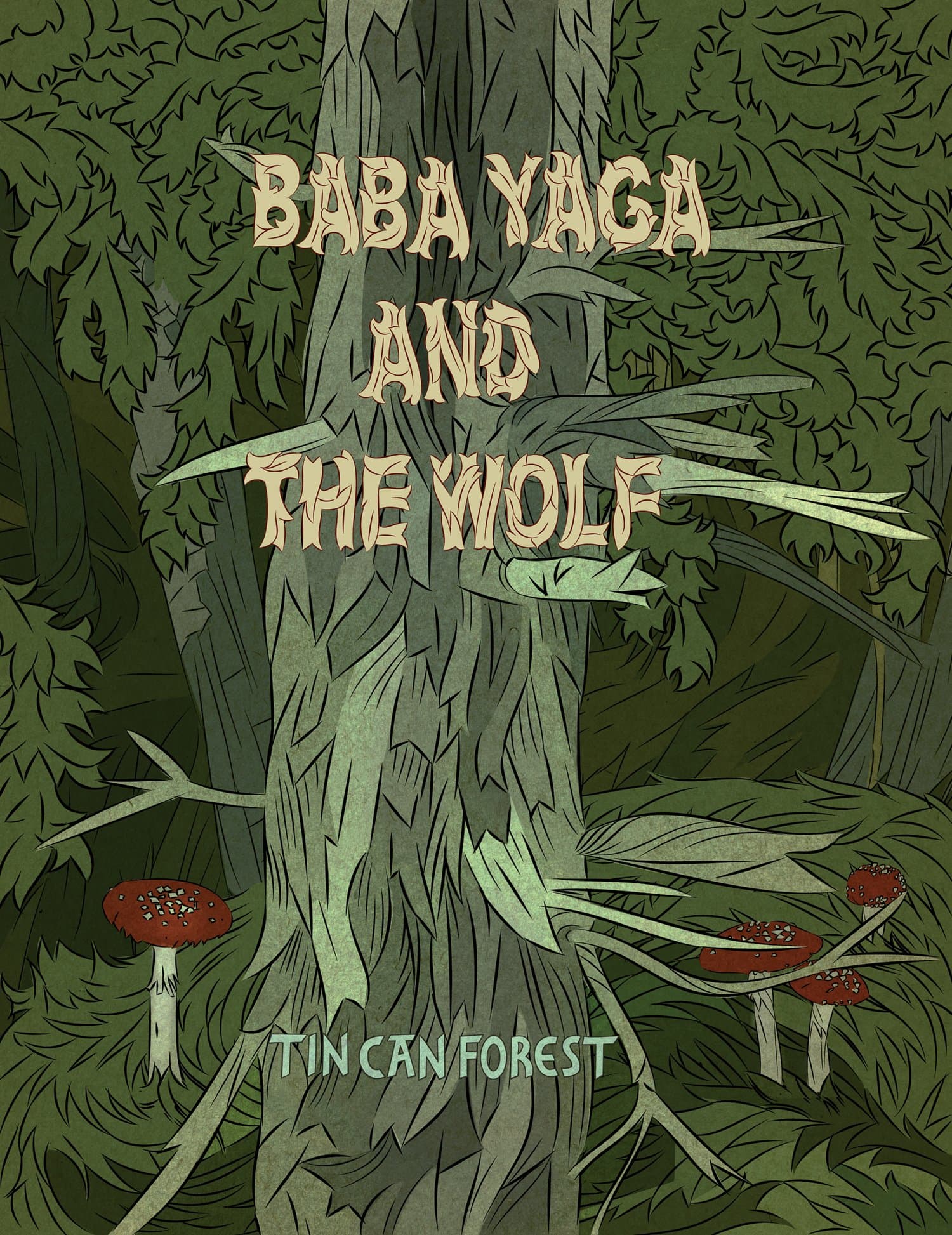
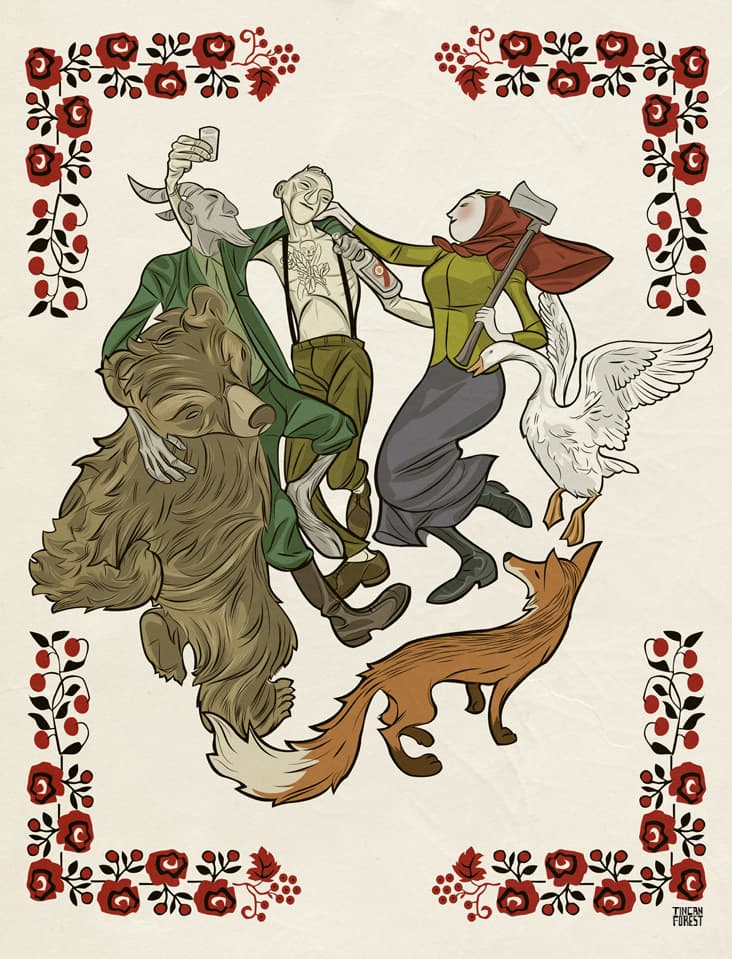


The deep, dark forest of our collective unconscious has never seemed more beautiful and mysterious than in the images of Tin Can Forest. The Toronto-based team of artists Pat Shewchuk and Marek Colek spin tales where barter-happy demons and animal spirits, drawn from Slavic folklore, walk in step with witches and villagers. We caught up with Tin Can Forest to ask them about their work and new book “Baba Yaga and the Wolf” from Koyama Press.
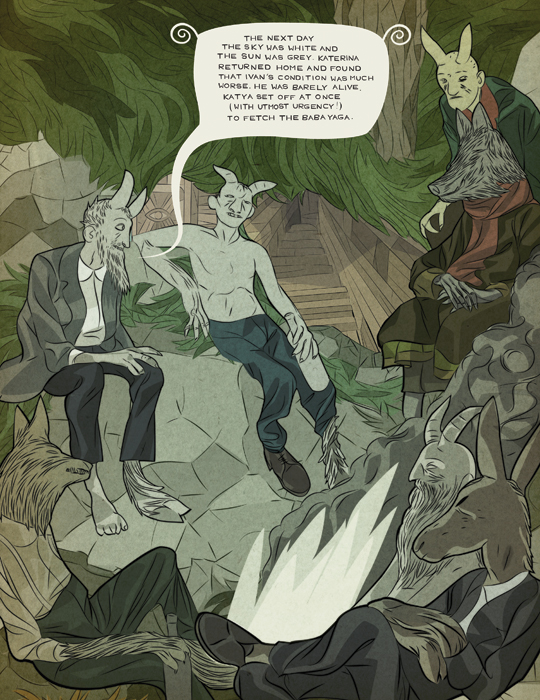
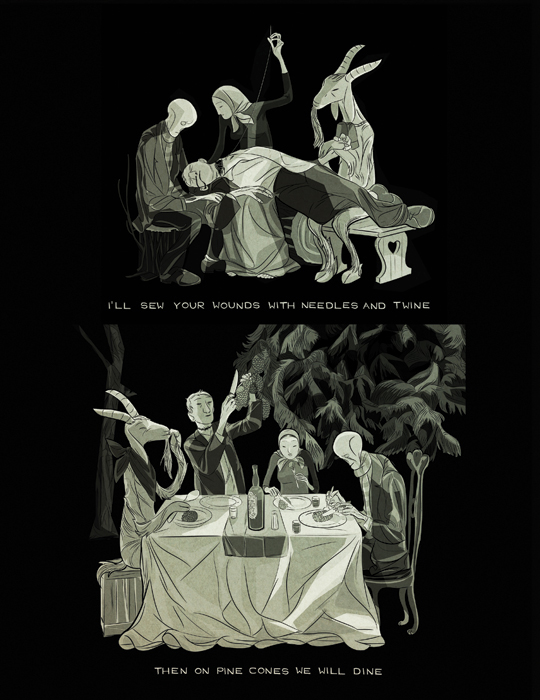
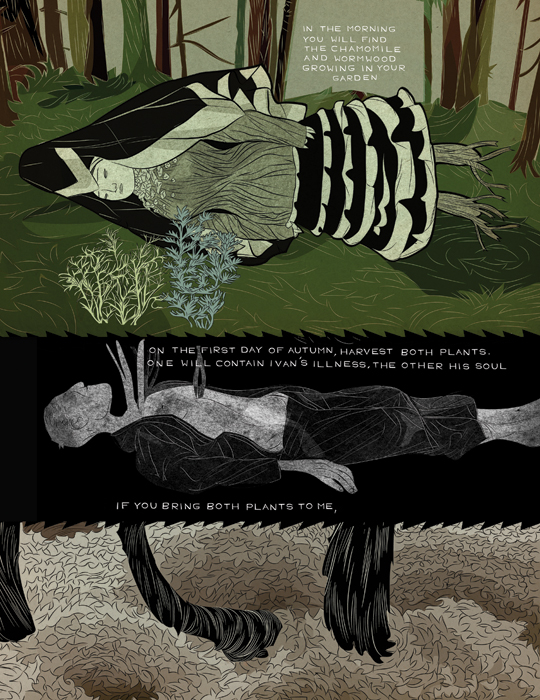
Your bio mentions that you draw inspiration from the folk tales of your Ukrainian and Czech backgrounds. Could you tell us a bit about the characters and themes in your work?
Pat – I grew up second generation Ukrainian-Canadian in Winnipeg. The cultural traditions practised in our house hold were very much tied into the church, and growing up I couldn’t see Ukrainian culture as existing independently from the church. As an atheist and environmentalist, I was very happy to discover the pre-christian roots of traditional Ukrainian folk culture. It was a way “back into the fold”.
I feel the reverence humanity had for nature in pre-christian/pagan cultures is something that’s been lost in our contemporary society. Along with this shift away from living within the natural world, we’ve also forgotten a lot of traditional common knowledge, i.e. the names and properties of local flora and fauna. My work channels traditional Slavic rituals and symbols to celebrate nature.
Marek – I would say that my work is greatly informed by growing up in an immigrant household. We spoke Czech at home, I had a library of Czech storybooks and huge collection of Czech kids magazines that were full of whimsical comics strips; a style of comic that didn’t really have a parallel in the West. I was of course also really into American comics and animation, but the work of Czech artists like Josef Lada, Adolf Born, Jiří Trnka among others, were closest to my heart and are still a huge influence and inspiration to this day. As far as the characters I draw, it’s a set of archetypes, such as the devil, the baba yaga, the rusalka, the wolf, the bear, etc. that I keep reinterpreting and redesigning to explore different themes. The themes in my work have changed quite a bit over the years, from purely formal concerns, to personal and political narratives, and this cast of characters is like a visual vocabulary I use to explore the subject matter that interests me.
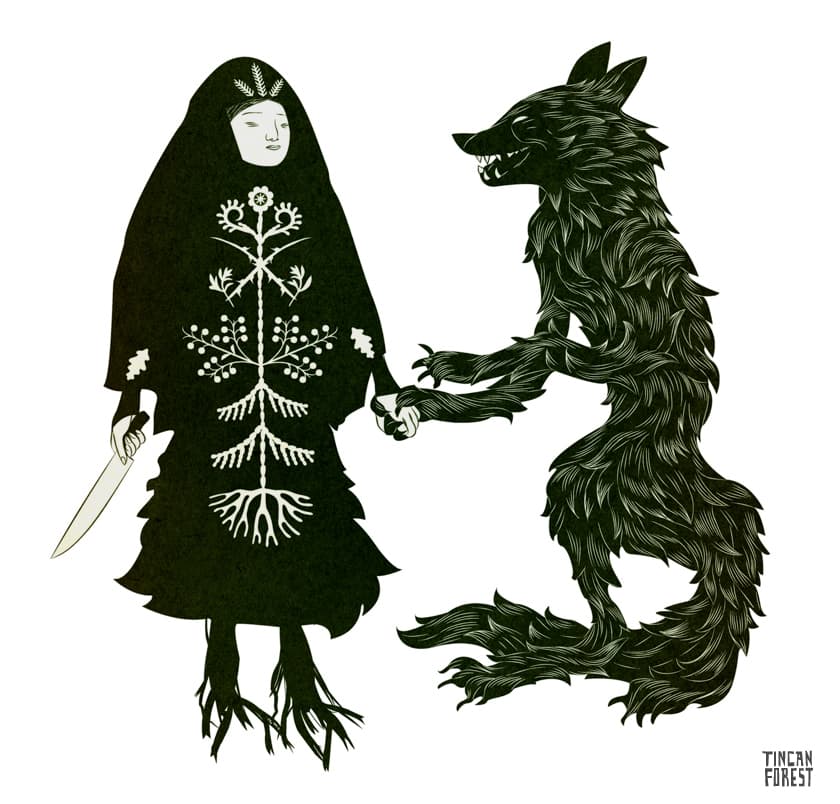
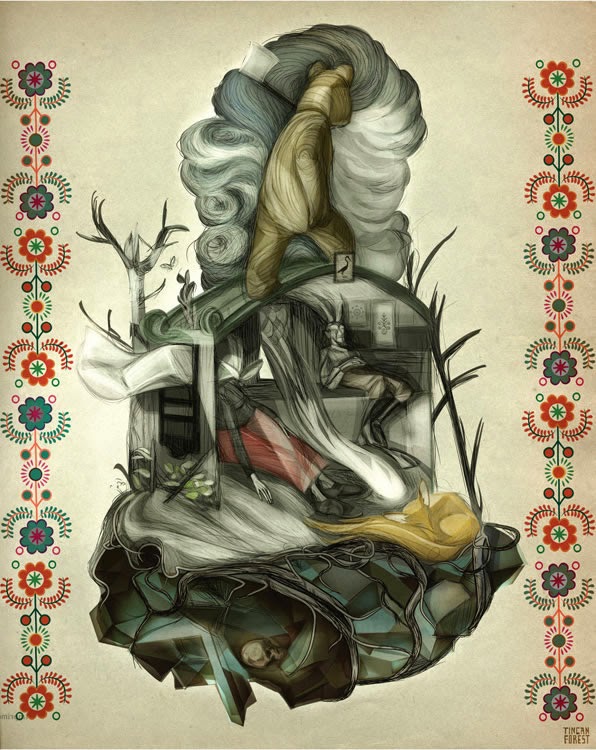
What does the name Tin Can Forest mean to you? How did you come to choose this as the name of your collaboration?
Pat – Marek came up with the name. It was a title of a poem he wrote for an art show we had in 2000. I thought it really suited us on several counts – the poem was written just before Y2K, and is about living in a dystopia of millennial anxiety and environmental disaster.
We love the forest, yet it’s constantly beleaguered by the detritus of modern consumer culture. At the same time Tin Can Forest has these nostalgic connotations to early comic strips, stop motion sets, fairy tales. I think the name expresses both our environmental politics, and describes our visual aesthetic as well.
Could you tell us a bit about your creative process and the way you work together as a team?
Pat – It depends on the project. Often when we collaborate on concepts and the development of ideas, I tend to do more of the research of themes and subjects we’re interested in, whereas Marek will compile the visual references.
Marek – Collaboration also involves long walks, fights, Eureka moments, dance parties, drinking binges, all night drawing or animating sessions, months of isolation on mountaintops, and loud music.
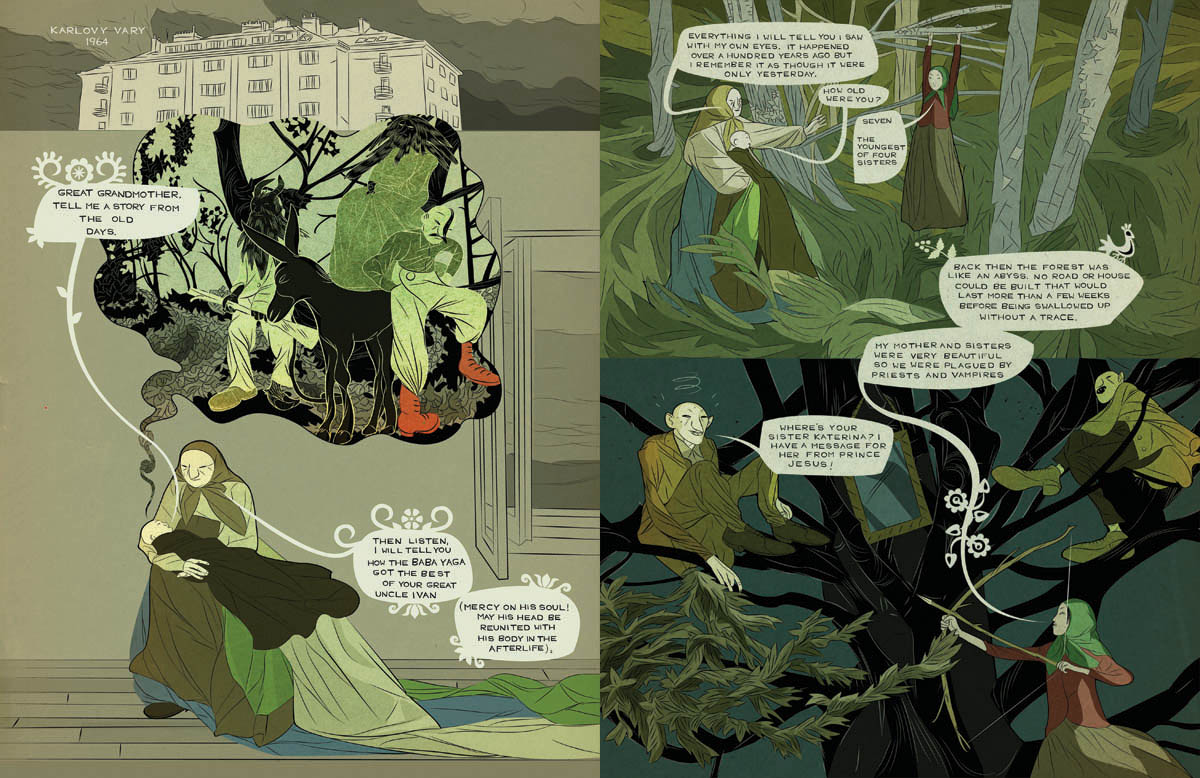
In addition to paintings and comics, Tin Can Forest designs, directs and produces animations both for client projects and personal work. Do you have a favourite from these activities? Do you approach personal and commercial work the same way?
Pat – We love to work on our own non-commercial projects the most, and this is our focus throughout the year. We are primarily artists who work commercially to support our art projects, though we’ve found working commercially is a good way to keep your skills in shape, and try new things you might not otherwise try.
Marek – Commercial work pays some of the bills. We’ve been lucky to work on a few really interesting commissioned projects, that offered a fair amount of creative freedom. We approach such jobs with the same enthusiasm as for our own art. On the other hand, there’s stuff we don’t want our work to support. We’re vegetarians, so to make animation or illustration for meat products would be hypocritical. I also think that car culture, especially in North America, has become way too overbearing, so we don’t want to help promote the car industry in any way.
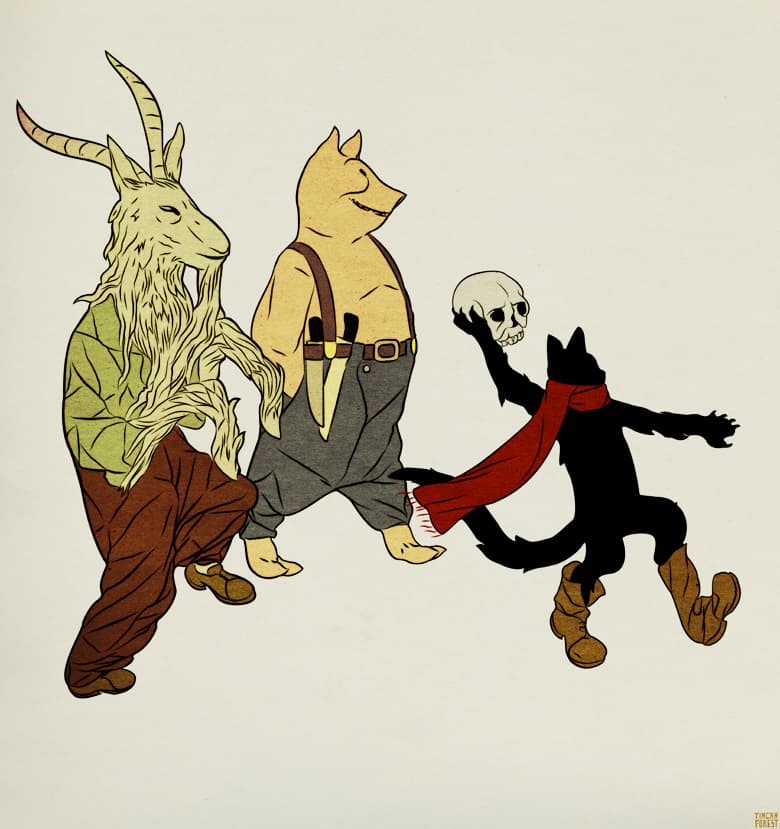
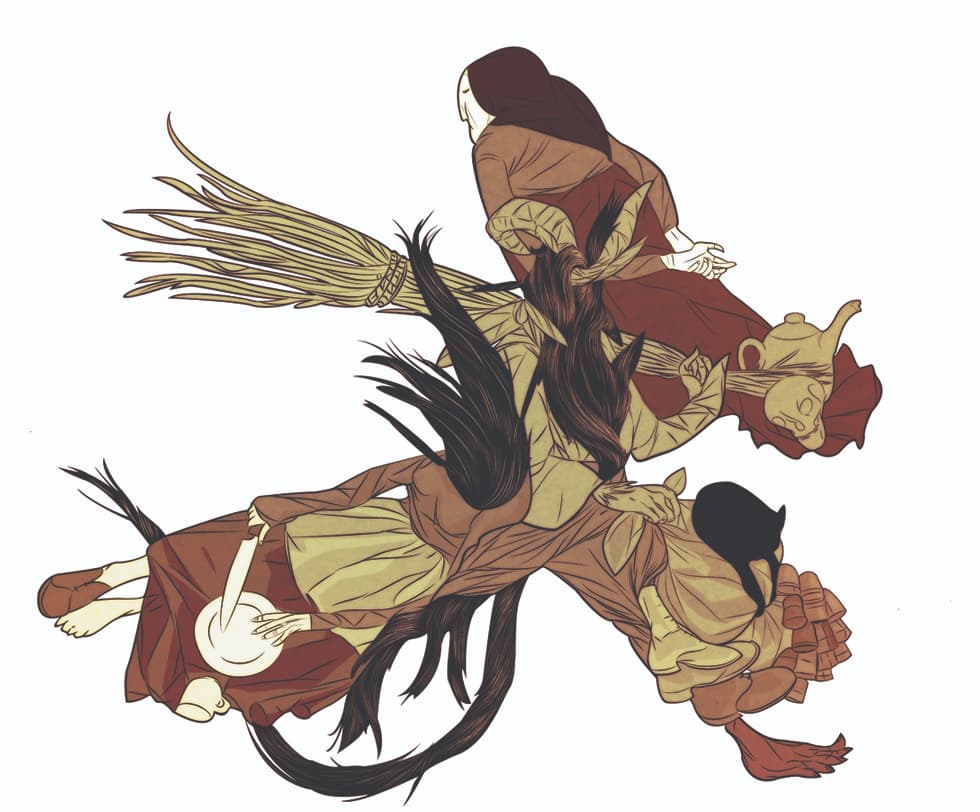
We’re very excited about your forthcoming book “Baba Yaga and the Wolf”. Could you tell us a bit about this project and what we can expect?
Marek – Our new book is a kind of a hybrid between a comic and an illustrated story-book. It’s visually very much in the vein of our last book Pohadky, with a combination of my drawings and Pat’s decorative designs, but with speech balloons and text. The story of “Baba Yaga and the Wolf” is told by different narrators throughout the book, and is a riff on the classic ” bargain with the devil ” narrative. We spent the last winter living in the forest on an island in BC, some of the book was done there, and some was done in the Czech Republic, where we were this past spring. Both places greatly inspired the imagery in the book, so I would say it’s a Slavic folk tale set in a Canadian forest. The book is published by the mighty Koyama Press.
What can we look forward to from Tin Can Forest?
Pat – We’re working on a video and album design for Geoff Berner’s upcoming record “Victory Party”. We’ve been fans of Geoff Berner for years, and we’re very happy and honoured to be working with him.
We’re finishing a film we shot and animated in the forest on Salt Spring Island called “Heart of the Forest”. It features music by Wolves In The Throne Room.
We’re also doing a kids book with Kids Can Press based on our short animated film “Montrose Avenue”, which portrays a day in the life of our street here in T.O.
Keep an eye on our blog for updates on any other Tin Can Forest happenings.